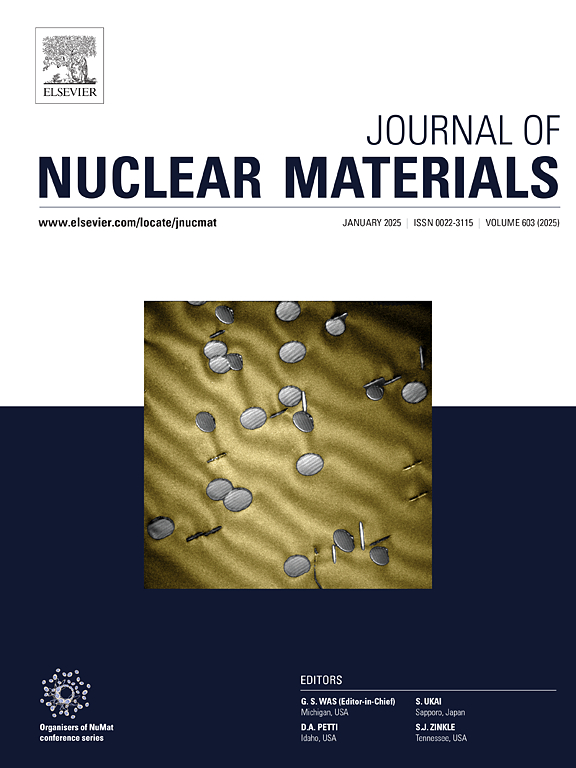Atomistic investigation of the evolution of He cluster-loop complex in fcc nickel
IF 2.8
2区 工程技术
Q3 MATERIALS SCIENCE, MULTIDISCIPLINARY
引用次数: 0
Abstract
The evolution of He bubble-loop complexes in fcc Ni is studied using atomistic simulations. The influences of temperature, He concentration and formation sequence (He bubbles formation cooperatively with or after a faulted dislocation loop) on the evolutions are systematically calculated and analyzed. Results show He bubbles nucleate at the edges of dislocation loops rather than inside them in all conditions, leading to a reduction of the formation energy of loops. We reveal two growth processes of the complexes, depending primarily on the formation sequence. When bubbles and loops grow cooperatively, the loop lines can bend around to enclose bubbles, creating complexes containing bubbles both at the loop edge and within the loop plane. When a bubble forms after a dislocation loop creation, the resulting complex contains bubbles only at the loop edge. The size of the bubble-loop complex increases with He concentration owing to additional SIAs kicked out by the He bubble, irrespective of its formation sequence. This study provides atomistic insights into He-enhanced nucleation and growth of dislocation loops in fcc metals and will help in developing a better understanding of the microstructure evolution in irradiated Ni materials.
求助全文
约1分钟内获得全文
求助全文
来源期刊

Journal of Nuclear Materials
工程技术-材料科学:综合
CiteScore
5.70
自引率
25.80%
发文量
601
审稿时长
63 days
期刊介绍:
The Journal of Nuclear Materials publishes high quality papers in materials research for nuclear applications, primarily fission reactors, fusion reactors, and similar environments including radiation areas of charged particle accelerators. Both original research and critical review papers covering experimental, theoretical, and computational aspects of either fundamental or applied nature are welcome.
The breadth of the field is such that a wide range of processes and properties in the field of materials science and engineering is of interest to the readership, spanning atom-scale processes, microstructures, thermodynamics, mechanical properties, physical properties, and corrosion, for example.
Topics covered by JNM
Fission reactor materials, including fuels, cladding, core structures, pressure vessels, coolant interactions with materials, moderator and control components, fission product behavior.
Materials aspects of the entire fuel cycle.
Materials aspects of the actinides and their compounds.
Performance of nuclear waste materials; materials aspects of the immobilization of wastes.
Fusion reactor materials, including first walls, blankets, insulators and magnets.
Neutron and charged particle radiation effects in materials, including defects, transmutations, microstructures, phase changes and macroscopic properties.
Interaction of plasmas, ion beams, electron beams and electromagnetic radiation with materials relevant to nuclear systems.
 求助内容:
求助内容: 应助结果提醒方式:
应助结果提醒方式:


